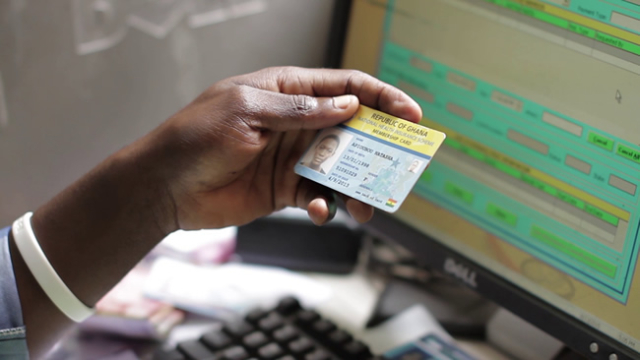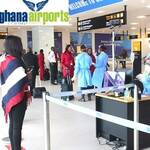About 14 million Ghanaians do not have health insurance coverage despite the existence of the National Health Insurance Scheme.
Deprivation in health insurance coverage is the largest contributor to multidimensional poverty in the first six months of 2022.
This is according to data released by the Ghana Statistical Service (GSS) in its Annual Household Income and Expenditure Survey (HIES).
Per the report, 34.6% of the population have health insurance in the first quarter of this year.
However, this number declined slightly in the second to 33.4%
Among the indicators for multidimensional poverty in the country, health insurance coverage and improved toilet facilities have the highest deprivations.
On food security, the findings reveal that 49.1% of the population, representing 15.1 million people, experienced food insecurity in the first quarter of 2022.
The findings showed that this number decreased to about 13 million (42.1%) in the second quarter of the year.
The prevalence of food insecurity is however higher in rural areas than urban areas.
In the first quarter of 2022, the prevalence of food insecurity in four regions in the northern part of the country [Savannah (58.8%), Upper West (61.8%), North East (65.6%) and Upper East (73.7%)] was more than twice that of the Greater Accra Region (27.2%).
All regions experience reduction in food insecurity between first and second quarters, except for the Upper West Region which experienced food insecurity ranging from 55% to 61.8%.
The Oti and Western North Region experienced the largest declines of food insecurity of 19.6 and 18.7% respectively.
Between first quarter (12.3%) and second quarter (6.4%), respectively, severe food insecurity reduces by almost half.
The decline is higher for rural households.
The Prevalence of severe food insecurity was highest in the North East Region (32.9%) and lowest in Eastern Region (7.3%).
Nine regions recorded higher severe food insecurity prevalence than the national average of 12.3%.
Multidimensional poverty
The proportion of the population that is multidimensionally poor increased from about 13.6 million people (44.1%), in the first quarter of 2022 to 14.4 million (46.7%) in the second quarter (Q2).
Even though about 803,000 more people are poor in the second quarter, the extent of poverty reduced across the two quarters..
At the regional level, more than half of the population in nine regions – Ahafo (53.7%), Western
North (56.5), Bono East (58.9%), Upper East (68.5%), Upper West (59.9%), Oti (72.5%), Northern (72.5%), Savannah (77.5%), and North East (77.6%) are multidimensionally poor.
The research also found that about 6.4 million persons are simultaneously food insecure and multidimensionally poor.
Labour statistics
The unemployment rate in Ghana in the first half of 2022 increased by 0.5 percentage points between the first quarter (13.4%) and second quarter (13.9%).
The unadjusted gender pay gap in the first quarter of 2022 was 37%, with males earning a mean hourly pay of GH¢11 and females GH¢6.9.
About 390,000 persons aged 15 years and older unemployed in the first Quarter remain unemployed in the quarter of 2022.
Between the first and second quarters of 2022, about 445,000 persons 15 years and older outside the labour force joined the number of unemployed persons.
Close to 850,000 persons 15 years and older employed in the first quarter transitioned to unemployment status in the quarter while more than 500,000 unemployed persons gained employment over the same period.
Food insecurity among employed population
Among persons in the labour force (15 years and older) about 380,000 are simultaneously food insecure, multidimensionally poor, and unemployed.
The Savannah Region emerged as the region with the highest percent of triple burdened (food
insecure, multidimensionally poor, and unemployed) persons which is more than twice the national average.
The Annual Household Income and Expenditure Survey (AHIES) is the first nationally
representative high-frequency household panel survey in Ghana and is conducted to obtain quarterly and annual data on household final consumption expenditure and a wide scope of demographic, economic and welfare variables including statistics on labour, food security, multi-dimensional poverty and health status for research, policy, and planning.
- Church of Jesus Christ, Ga Mantse Foundation renovate Adabraka School - 27 June 2024
- Manufacturers, Trade Minister tussle over proposed cement price regulation - 26 June 2024
- Work begins on Nima-Paloma drains - 26 June 2024




